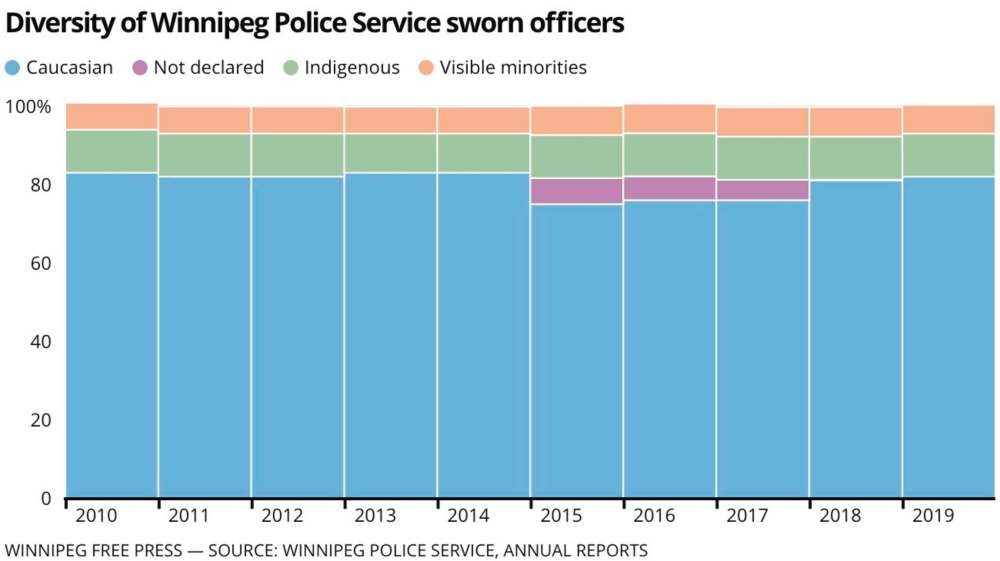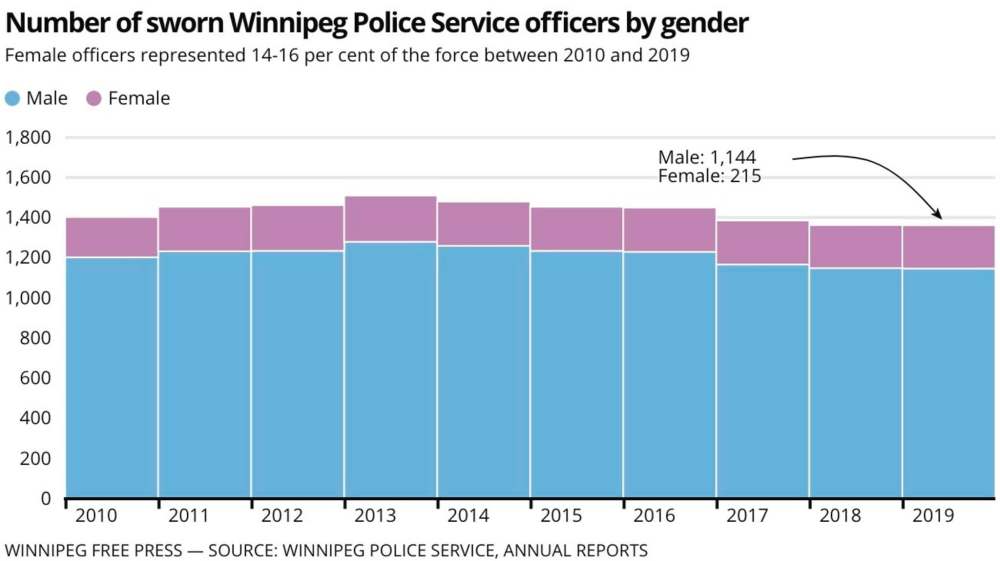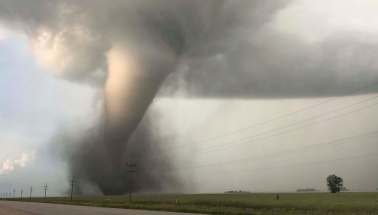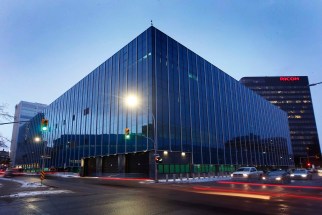Police force urged to boost diversity
Read this article for free:
or
Already have an account? Log in here »
To continue reading, please subscribe:
Monthly Digital Subscription
$0 for the first 4 weeks*
- Enjoy unlimited reading on winnipegfreepress.com
- Read the E-Edition, our digital replica newspaper
- Access News Break, our award-winning app
- Play interactive puzzles
*No charge for 4 weeks then price increases to the regular rate of $19.00 plus GST every four weeks. Offer available to new and qualified returning subscribers only. Cancel any time.
Monthly Digital Subscription
$4.75/week*
- Enjoy unlimited reading on winnipegfreepress.com
- Read the E-Edition, our digital replica newspaper
- Access News Break, our award-winning app
- Play interactive puzzles
*Billed as $19 plus GST every four weeks. Cancel any time.
To continue reading, please subscribe:
Add Free Press access to your Brandon Sun subscription for only an additional
$1 for the first 4 weeks*
*Your next subscription payment will increase by $1.00 and you will be charged $16.99 plus GST for four weeks. After four weeks, your payment will increase to $23.99 plus GST every four weeks.
Read unlimited articles for free today:
or
Already have an account? Log in here »
Hey there, time traveller!
This article was published 11/08/2020 (1950 days ago), so information in it may no longer be current.
There’s a growing call to ensure Winnipeg’s police and other emergency services reflect the diversity of our city.
But data on firefighters and paramedics are not individually tracked to determine progress toward that goal.
And while the Winnipeg Police Service shares information on sworn officers who identify themselves as women, Indigenous people or members of visible minority groups, it appears there’s been little change to the force’s makeup over the past 10 years.
A Free Press analysis found 83 per cent of police officers were Caucasian in 2010, which fluctuated between 75 per cent and 83 per cent through 2019. A “not declared” option added to the data in 2015 affects some of the figures.
During the same years, 10 per cent to 11 per cent of officers were Indigenous, while between 6.8 per cent and 7.5 per cent were members of a visible minority group.
The portion of officers who were male fluctuated between 84 per cent and 86 per cent, while females made up between 14 per cent and 16 per cent.
The chair of the Winnipeg Police Board said there is a clear need to increase diversity within the police force.
“As Winnipeg’s population is growing, and largely through immigration, it’s an opportunity to evolve our policing to be more reflective of the community that it’s serving,” said Coun. Markus Chambers (St. Norbert-Seine River).
About 12 per cent of Winnipeg’s overall population is Indigenous, while 28 per cent belong to a visible minority group, according to a recent city report. Men and women each make up about half of the local population.
Chambers said police have not announced current diversity targets but generally strive to create a more diverse workforce.
The councillor believes the police board should debate whether targets should be a part of that effort.
“The board has to decide whether or not … this is something that we feel is appropriate,” said Chambers.
He’d also like to see a similar focus for firefighters and paramedics, who he noted also engage with the public.
Zilla Jones, a Winnipeg lawyer who has worked on criminal defence and human rights cases, said creating a diverse staff brings different voices to decision making.
“It is about having those skills and perspectives that people can bring to the table. If you have that in an organization, then it makes it stronger and better,” said Jones.
She said the city shouldn’t necessarily rule out setting diversity targets for emergency services but should take other steps first, such as working to overcome the biases and barriers that prevent some candidates from applying for those jobs.
“If people don‘t see (the job) as an option, (the city) should find out why,” said Jones. “It’s not just throwing up your hands and saying, ‘We put out posters, why didn’t anybody apply?’ ”
For example, Jones said recent global protests against police brutality, including large rallies in Winnipeg, highlighted concerns about systemic racism in law enforcement. Those concerns could keep members of racialized communities from wanting to become officers, she said.
Jones said employers must also pay attention to retaining diverse staff, not just hiring them.
“If people don‘t see (the job) as an option, (the city) should find out why. It’s not just throwing up your hands and saying, ‘We put out posters, why didn’t anybody apply?’ ” — Zilla Jones, Winnipeg defence and human rights lawyer
“I would hope that the goal isn’t just to get diverse people through the door but is actually to make it a place of work that respects diversity, that listens to those diverse voices,” she said.
Delia Douglas, the anti-racism practice lead for the University of Manitoba’s Rady Faculty of Health Sciences, stressed that creating an equitable workplace depends on more than mere hiring numbers.
“To just include people into existing systems does not address the system itself. More often than not, what happens is you get that lovely photo op of diverse representation, as opposed to equal participation, equal access,” said Douglas.
“The fact of just having diverse numbers does not in and of itself ensure equity or equality,” she added.
She said organizations need to assess how they operate and address long-standing systemic concerns throughout every level of their power structures.
“Racism’s not new, neither is homophobia or misogyny,” said Douglas. “The past shapes the present and we’re living with the legacies.”
The city released its first overall workforce diversity report in February, using 2018 data. It shares statistics for three broad groups: emergency services (which combines police and Winnipeg Fire Paramedic Service staff); transportation and utilities; and all other city services.
“Racism’s not new, neither is homophobia or misogyny. The past shapes the present and we’re living with the legacies.” — Delia Douglas, anti-racism practice lead for the University of Manitoba’s Rady Faculty of Health Sciences
In 2018, 8.3 per cent of emergency services workers were women, 3.5 per cent declared themselves to be Indigenous and 2.3 per cent declared themselves as members of a visible minority group. Across the entire city workforce, 29.9 per cent of staff were women, 9.7 per cent were Indigenous and about 15 per cent were visible minorities.
In an email, city spokesperson Tamara Forlanski said an update with 2019 figures should be released sometime this fall.
Diversity among Winnipeg’s firefighters and paramedics is not counted separately but creating a more inclusive workforce is a priority in all city departments, Forlanski stated.
“The City of Winnipeg is committed to building a diverse workforce representative of the residents it serves,” she wrote.
The Winnipeg Fire Paramedic Service has not set diversity targets for its workforce. It does participate in multiple community outreach events, which include annual camps for newcomer and Indigenous youth that teach skills required to become a firefighter, paramedic or 911 call-taker, wrote Forlanski.
That camp was cancelled for this year, due to COVID-19.
Forlanski said the city is now recruiting an equity, diversity and inclusion program co-ordinator, who will “help develop employment equity targets and programs to improve the diversity of our workforce.”
Joyanne.pursaga@freepress.mb.ca
Twitter: @joyanne_pursaga

Born and raised in Winnipeg, Joyanne loves to tell the stories of this city, especially when politics is involved. Joyanne became the city hall reporter for the Winnipeg Free Press in early 2020.
Our newsroom depends on a growing audience of readers to power our journalism. If you are not a paid reader, please consider becoming a subscriber.
Our newsroom depends on its audience of readers to power our journalism. Thank you for your support.









